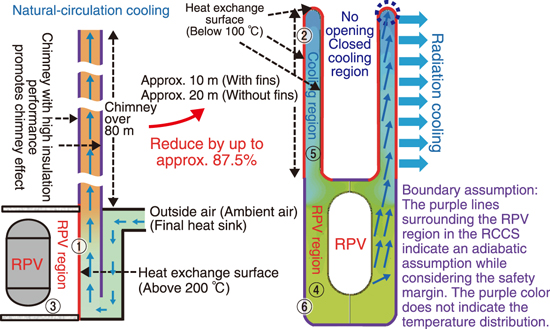
Fig.6-12 Structural differences between a natural circulation cooling system (left) and a radiation cooling system (right)
Table 6-2 Comparative study results of two types of passive RPV cooling systems

Recently, there has been increasing demand for High Temperature Gas-cooled Reactors (HTGRs) that do not cause core meltdown. Conventional cooling systems adopt active Reactor Pressure Vessel (RPV) cooling systems using the forced circulation of water, such as that achieved by pumps, to remove the heat released from the RPV. However, the pumps cannot be operated if the power supply shuts down, and there is a possibility that the heat removal activity (i.e., cooling activity) will decrease drastically. Even in this accident condition, core meltdown will not occur in the HTGR, but there is a possibility that the temperature of the RPV will exceed the operating limit temperature and its operation will be shut down.
Therefore, unlike the case of the facility where the TEPCO’s Fukushima Daiichi NPS accident occurred, safer RPV cooling systems in which the heat sink is never lost and active systems or emergency power sources, etc. are never needed and wherein the decay heat can be passively removed from the reactor core even under any accident conditions are being explored.
At present, a passive RPV cooling system employing the natural circulation of outside air (ambient air) is proposed as a candidate for commercial HTGRs (Fig.6-12 left). The coolant of the outside air is never lost. However, a large number of external parameters and items are to be considered (Table 6-2), and they affect the natural-circulation cooling system (Fig.6-12 left). Therefore, we have developed a novel passive RPV cooling system based on radiative cooling (Fig.6-12 right). The amount of heat removed from the RPV for a practical HTGR should be equivalent to 3 kW/m2* when converted to heat flux. Through experiments using the heat-transfer test equipment that can simulate an actual cooling system, we confirmed that approximately 7 kW/m2 of heat can be removed.
Next, to make possible the practical use of the natural-circulation cooling system and radiation cooling system, it is necessary to evaluate their safety features to check whether both systems can remove passively the decay heat during normal operation (Table 6-2(a)) and under any accident conditions, including natural disasters (Table 6-2(b)).
Therefore, we investigated the structural differences between the two systems and the effects of external parameters on them. During normal operation, in the natural-circulation cooling system, the combustible materials that are introduced (absorbed) into the duct along with the outside air are heated on the heat exchange surface (①), and low-temperature ignition may occur without any heat sources; consequently, temperatures in the clogged duct and chimney will increase remarkably.
In addition, there are some risks that the heat removal ability will decrease because of the large number of external parameters and factors that affect the natural-convection heat transfer coefficient. Some such factors are the occurrence of unstable phenomena in natural circulation and fluid vibration. Furthermore, when natural disasters, such as a typhoon or heavy rainfall event, occur, the disturbance of the outside air affects the natural-circulation cooling system, and there is a possibility that the heat removal ability will decrease. In contrast, in the case of the radiation cooling system, we confirmed that the system can remove heat safely and reliably both during normal operation and natural disasters and clarified the possibility of achieving better safety in the event of an accident compared to the natural-circulation cooling system. Although the RPV regions (③ and ④) of both cooling systems are closed regions, the pressure rise due to the increase in temperature of the internal gas does not pose a problem (i.e., there is no effect of the pressure rise).
This work was supported by JSPS KAKENHI Grant-in-Aid for Scientific Research (C) (JP18K05000).
(Kuniyoshi Takamatsu)
* Argonne National Laboratory, Private Communication.